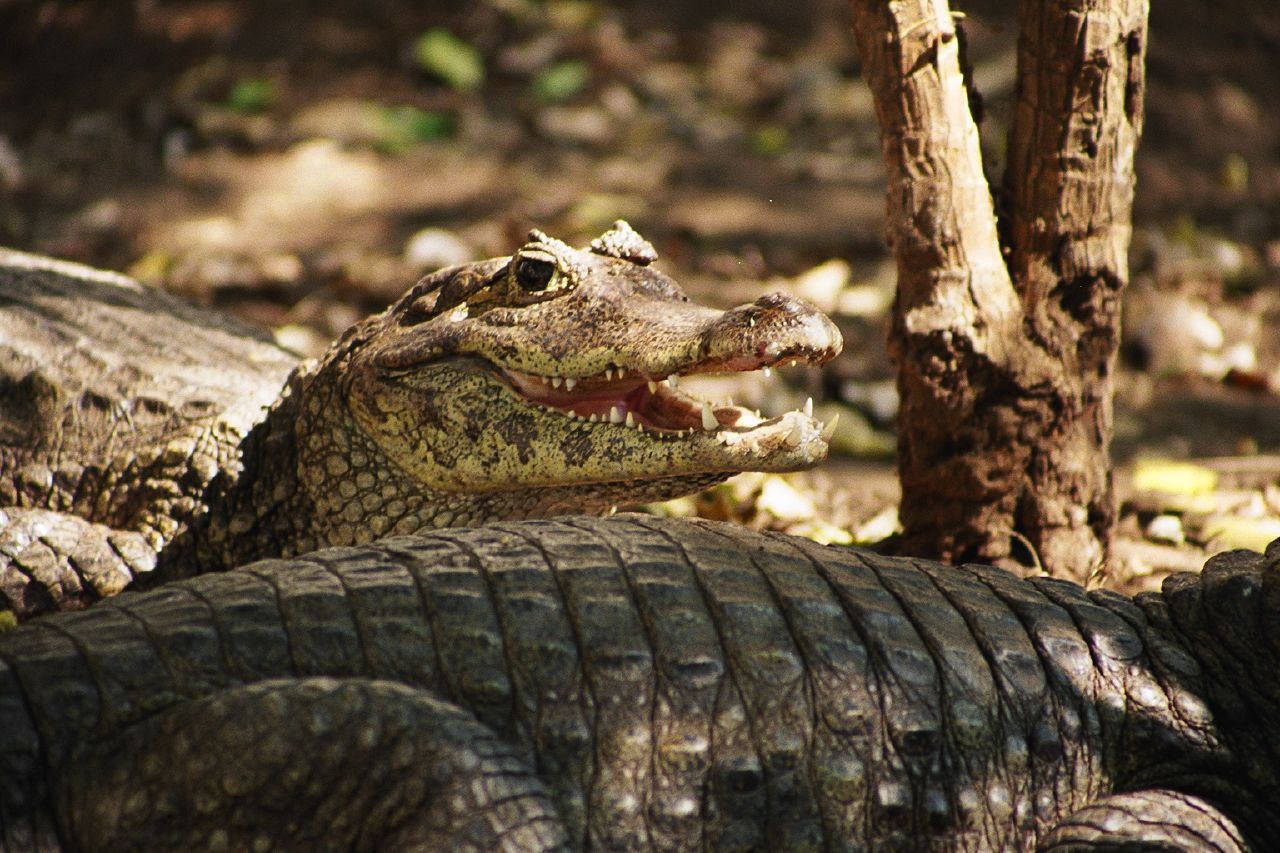Since 1997, Reptilia Zoo in Vaughan has been providing the public with opportunities to learn about wildlife. From local ponds to down under, visitors who come to admire the beauty of these creatures are amazed by all they have to offer. With over 200 types of different species and ecologies, Reptilia is a place to learn and experience how life is for the ectothermic.
Recent discoveries found by Ariana Boem and Lindsay Dawson, zookeepers at Reptilia, have shown that their crocodilians, specifically the spectacled caiman, are smarter than one might think. In fact, these two zookeepers discovered that these reptiles — named Carter, Cevin, and Canine — have the ability to recognize their own names when being fed. These findings add to a growing literature on reptilian cognition, which has begun to consider reptiles capable of experiencing feelings like anxiety, tension, discomfort, excitement, fear, frustration, pain, and suffering.
Just recently, for example, the University of Lincoln discovered that red-footed tortoises that made a more direct decision in a cognitive bias test exhibited less anxiety when exposed to unfamiliar environments. The researchers concluded that these animals could have “human-like feelings.” The work of Boem and Dawson has added to this body of inspiring research.
When thinking about reptiles, one might assume they are the inert ones of the animal kingdom. They are usually mute, assume one position for extended periods, and perhaps not as brashly energetic as animals like lions, apes, or hyenas. This discovery opens new doors to studying spectacled caimans’ brain/language/awareness by introducing a new model organism that is used in research.
According to Oxford Bibliographies, comparative psychology is the scientific study of the behaviour and cognition of human and non-human animals, with emphasis on how behaviour relates to phylogeny, ontogeny, and adaptation. What Boem and Dawson have discovered with these spectacled caiman could lead to a new opening in scientific research for reptilian minds, since there is not much research done on these reptiles to begin with.
When asked where the naming idea originated, Boem states that it “came from seeing that other crocodilians were already name-trained. We thought it would be both enriching and useful for safety training. Having them learn commands helps make sure they eat safely and calmly during feeding times, so it’s beneficial for both the animals and the keepers.”
Of course, with adapting to a specific behavioural pattern comes training. Just like humans, reptiles need to understand their names and words that coincide with specific things. The theories and practices of both B.F Skinner, who is highly credited towards reinforcement, and Ivan Pavlov, who is renowned for discovering his theory of classical conditioning, have been implemented in training the spectacled caiman.
Boem remarks, “We used positive reinforcement. Every time they responded correctly, they’d get a reward — usually food. It’s all about creating a consistent and positive association with their names.”
A question may arise when looking at these reptiles after they respond to their names: How can we be sure they really know? Dawson says that at first the spectacled caimans would “just come when they heard any name. But as they started to trust us and hear the subtle differences in pronunciation, we noticed that they began responding only to their own names. For example, Cevin eventually stopped coming when we called Carter or Canine. They’re all very active and eager now, but it took time for them to distinguish their individual cues.”
At feeding time, Dawson uses commands like “Cevin, stop,” or even, “Carter, stay,” and they did exactly what Dawson told them to do. Amazed, Dawson relayed: “The team started training all the caimans to respond to their names, which started with a ‘c.’ Over time, we noticed that some would come for specific names and others for different ones. We started fine-tuning their names, but fear was the biggest issue early on. Once they started trusting their keepers (Dawson and Boem), the caimans began recognizing their names better. Carter developed trust faster than the others, while Canine and Cevin were the most food-motivated.”
This evidence of reptile intelligence further shows what Dawson preaches: “They’re a lot smarter than people think. Their training has leaned more toward problem-solving, and they’ve been surprisingly quick learners.” Boem adds, “They even know when it’s feeding time now, like when they see us approaching their enclosures with a bowl. I think it really proves that reptiles are far more intelligent than people give them credit for.”
In addition to intelligence, these caimans display memory and social behaviour as well. Dawson says, “Even though they’re crocodilians, there’s a clear social dynamic there, a hierarchy to be specific. They have to feel comfortable before they’ll eat or interact. When an animal feels comfortable, it can do so much more cognitively. Their body language says a lot — it reflects how they behave in the wild. For them, language is all about sound and subtle cues.”
However, there is a shift in socializing with animals when it comes to captivity compared to their natural habitat. Boem says that this type of socializing is especially important in captivity. “Through training, we’re keeping them enriched and helping them maintain their natural behaviours.”
If you are interested in seeing these clever caimans, or other reptiles, Reptilia Zoo would most definitely leave you speechless. From being able to feed a reptile yourself, to watching live educational shows, to having your own picture with an anaconda, this place is for you.


